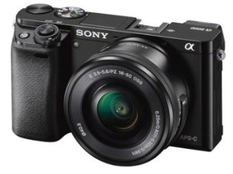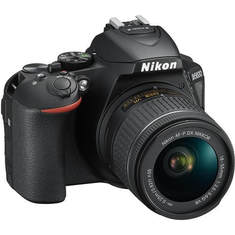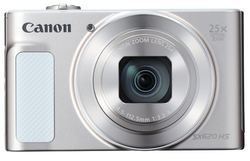What Are Digital Camera Pixels and What are Megapixels?
A pixel is a tiny dot or square of color that is part of a digital image. A digital image (picture) consists of millions of these pixels or picture elements in different colors and different color intensities. The word Pixel is a twist on the words "picture" and "element" combined.
So what are megapixels in a camera? Digital camera megapixels are simply pixels expressed in millions. There are one million pixels in a megapixel.
Pixels are created when the light that flows through the camera lens is captured into a device inside the camera called the Image Sensor. The image sensor has millions of light capturing wells or cavities called photosites. Each of these photosites have specific locations and are arranged in rows and columns similar to a spreadsheet.
The information about the qualities of the light captured in each of these photosites is recorded and tranferred to the camera memory. When the information is reproduced, the pixels are shown as continuous varying tones and colors that we view as the final image or "picture".
Image #2 below is a copy of image #1 showing how the pixels would look if they were greatly magnified. In reality, pixels are much smaller than what you see in image #2, but hopefully, you get the idea.
So what are megapixels in a camera? Digital camera megapixels are simply pixels expressed in millions. There are one million pixels in a megapixel.
Pixels are created when the light that flows through the camera lens is captured into a device inside the camera called the Image Sensor. The image sensor has millions of light capturing wells or cavities called photosites. Each of these photosites have specific locations and are arranged in rows and columns similar to a spreadsheet.
The information about the qualities of the light captured in each of these photosites is recorded and tranferred to the camera memory. When the information is reproduced, the pixels are shown as continuous varying tones and colors that we view as the final image or "picture".
Image #2 below is a copy of image #1 showing how the pixels would look if they were greatly magnified. In reality, pixels are much smaller than what you see in image #2, but hopefully, you get the idea.
How many pixels or megapixels do you need? Generally, more can be better. Each pixel has information about the color and intensity of the light gathered at its location. (or photosite) The more information about the qualities of the light that can be captured by the camera's image sensor, the better the quality of the final image. The information about the pixel density and other digital information about the image is known as the image resolution.
A 20 megapixel camera should produce a higher quality image than an 8 megapixel camera. The difference between a 20 megapixel image and an 8 megapixel image taken with a compact camera might not be apparent when you view them on a computer screen. However,when you make prints of the images and enlarge them to certain sizes, the difference in the quality of the prints will be evident.
Although the number of digital camera megapixels available in digital cameras seem to increase every year, the size of the image sensors may remain about the same. After a certain point, cramming more pixels into the same size camera image sensor does not always equal much better image quality. However, what does make a difference in image quality is larger pixels in a larger camera image sensor.
Digital Camera Image Sensor Size and Pixel Size: Larger Digital camera image sensors have larger pixels. The size of a pixel definitely affects the quality of a digital image. A larger pixel will absorb more light and information about that light during an exposure than a smaller pixel. This translates into more digital information being recorded during the exposure. More information about the light in a scene means the scene you are taking pictures of will be reproduced with more accuracy.
A 20 megapixel camera should produce a higher quality image than an 8 megapixel camera. The difference between a 20 megapixel image and an 8 megapixel image taken with a compact camera might not be apparent when you view them on a computer screen. However,when you make prints of the images and enlarge them to certain sizes, the difference in the quality of the prints will be evident.
Although the number of digital camera megapixels available in digital cameras seem to increase every year, the size of the image sensors may remain about the same. After a certain point, cramming more pixels into the same size camera image sensor does not always equal much better image quality. However, what does make a difference in image quality is larger pixels in a larger camera image sensor.
Digital Camera Image Sensor Size and Pixel Size: Larger Digital camera image sensors have larger pixels. The size of a pixel definitely affects the quality of a digital image. A larger pixel will absorb more light and information about that light during an exposure than a smaller pixel. This translates into more digital information being recorded during the exposure. More information about the light in a scene means the scene you are taking pictures of will be reproduced with more accuracy.
|
Digital SLR cameras like the Nikon D5600 have larger image sensors than Compact Digital cameras and the larger sensors will contain larger pixel sizes.
A 14 megapixel Digital SLR camera with its larger sensor and pixel sizes, will produce a higher quality image than a 14 megapixel Compact Digital camera with its smaller pixels and sensor size. |
 Sony Alpha a6000 Compact System Camera
Sony Alpha a6000 Compact System Camera
Don't let that bit of information discourage you if you own a Compact Digital camera or were thinking about purchasing one. The quality of images from a Compact Digital camera like the Canon Powershot SX620 HS is excellent for the average user. Also, the larger pixel sizes in Digital SLR cameras probably isn't necessary for casual users.
The bottom line is that you should not be overly concerned about the number of megapixels in a camera. Most of todays cameras have more than enough megapixels to satisfy the average consumer. Hopefully, this article has answered the questions, what are pixels and what are megapixels?
If you think the larger image sensor size might suit your needs but don't want a bulky Digital Slr camera, then consider a Compact System Camera. (Also known as mirrorless cameras). Some compact system cameras like the Sony Alpha a6100 have the same size image sensors (APS-C) as many Digital Slr cameras.
However, compact system cameras are smaller than Digital Slr cameras and their size is usually just slightly larger than the average basic compact camera.
Check the tutorials, Compact Digital Cameras and Digital SLR Cameras to read about some of the other important features that are available in those type cameras.
The bottom line is that you should not be overly concerned about the number of megapixels in a camera. Most of todays cameras have more than enough megapixels to satisfy the average consumer. Hopefully, this article has answered the questions, what are pixels and what are megapixels?
If you think the larger image sensor size might suit your needs but don't want a bulky Digital Slr camera, then consider a Compact System Camera. (Also known as mirrorless cameras). Some compact system cameras like the Sony Alpha a6100 have the same size image sensors (APS-C) as many Digital Slr cameras.
However, compact system cameras are smaller than Digital Slr cameras and their size is usually just slightly larger than the average basic compact camera.
Check the tutorials, Compact Digital Cameras and Digital SLR Cameras to read about some of the other important features that are available in those type cameras.


